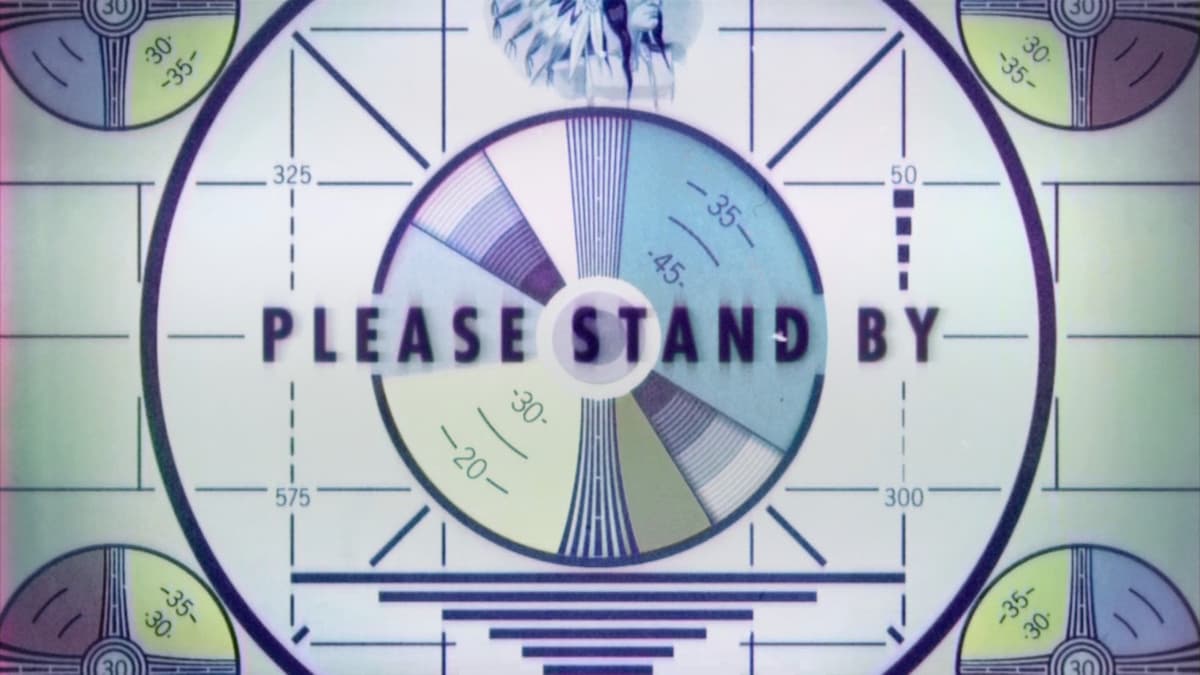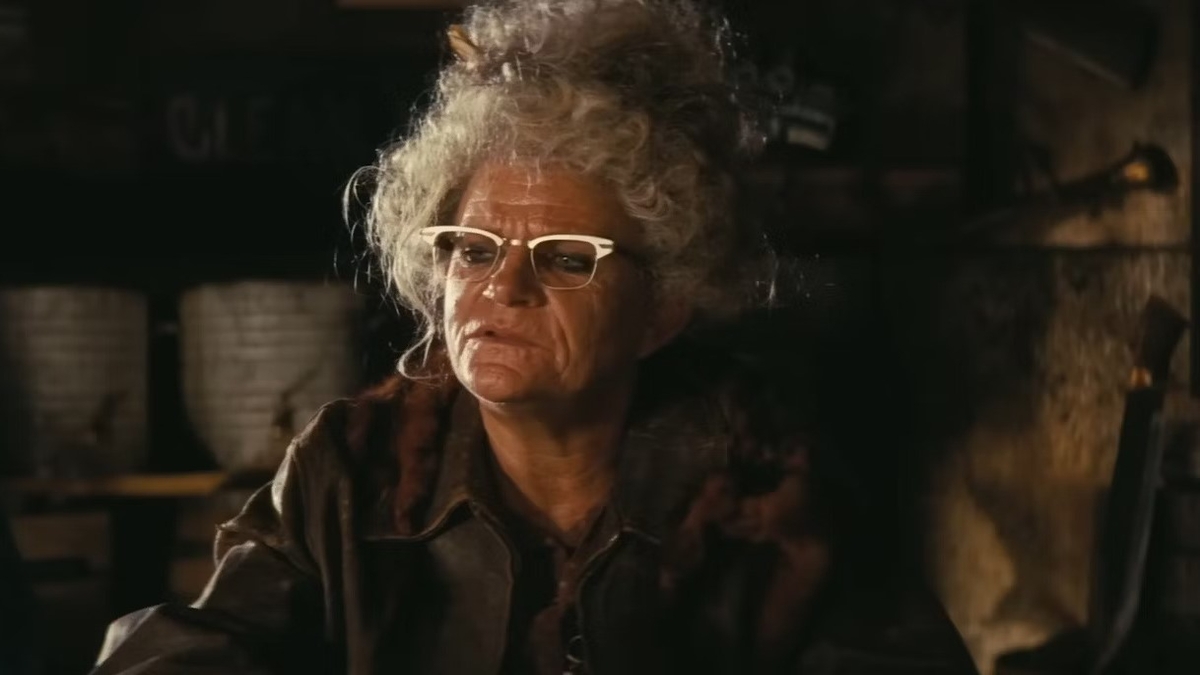Now that the National Videogame History Museum will break ground in January 2015, I thought it might be fun to speculate what would be 10 home video game consoles that absolutely should be on display.
In researching this article, it brought back a lot of childhood nostalgia. I remember spending hours in front of the TV playing many of these games, and it was difficult to really sort out which would truly make it into the top 10. I really couldn’t rank these against each other since each one is truly unique and groundbreaking, that there really wouldn’t be any objective way to say any one system is “better” than any other.
So in the end, I present you with this list, which is not ranked, but rather, is listed in more or less a chronological order of video game consoles that should be included in any respectable video game museum.
1. Magnavox Odyssey

This console is truly the grandaddy of video game consoles. Released in August 1972, and pre-dating Atari’s Pong arcade game by 3 years, the Odyssey did not have any audio, was powered off 6 “C” batteries, (or A/C adapter sold separately) and used translucent color plastic overlays that players could put on their TV screens to simulate color graphics. (Yes, the games back then were only in two colors) It came with 2 paddles for controllers. For you younger folk, “paddles” were game controllers that were nothing more than just a knob that you twisted back and forth. Basically, in those days, game movement was restricted to just left and and right, or up and down. Later models of paddles included a button as an extra input option.
Notable Games
A total of 27 games were made available for the Odyssey by way of printed circuit boards (that were called “game cards”) that were inserted into the system, similarly to game cartridges in later systems. Some of the game cards had multiple games on them, so there were only 12 different game cards that were released.
When it comes to the older generations, just about every game is notable since video games were so new at the time. For the Magnavox Odyssey, most of the games were essentially different variations of Pong, with games such as Table Tennis, Tennis, Volleyball, Soccer, etc.
Why It Should Be in the Museum
I think this one is a no-brainer. This is the console that started it all, and inspired future generations of video game consoles. The machine did not have any brains, however, as it was lacking a CPU. It wouldn’t be until 4 years later until a semiconductor company came up with such a console…
2. Fairchild Channel F

This is a system that I am willing to bet that most people have never heard of. Released in November 1976, this system was put out by Fairchild Semiconductor, which is better known as a company that produces computer chips, and was the pre-cursor to Intel. (A bit boring of a history lesson, but some of the founders of Fairchild went on to start up Intel, AMD, and other semiconductor companies in the Silicon Valley). The system came with an interesting pair of controllers that were like joysticks without bases.
At the top of the controller, was a triangular “cap” that allowed for 8-way directional control, but could also be twisted, so in today’s world, it could be viewed as the analog control knobs, but they could also be twisted. This made it so the controllers were both joysticks and paddles simultaneously. As for audio, it made an improvement over the Odyssey, only in that it did have audio, although it came through an internal speaker on the console, and not through the TV speakers.
Notable Games
The system only had 26 games developed for it, and as you might have guessed already, most of the games were variations of Pong. Games on the system included Video Whizball, Bowling, Pro-Football, Video Blackjack, Baseball, etc.
Why It Should Be in the Museum
The Fairchild Channel F is the first video game console to use a dedicated CPU inside, as well as the first video game console to use game cartridges. It was different from the Magnavox Odyssey’s “game cards” in that the cartridges contained Read Only Memory (ROM) chips that allowed the games to be programmed by software, versus the game cards which were a series of physical jumpers between pins of the card connector. One other important reason this should be in the museum is that due to the use of the CPU, it was able to produce enough AI for players to play against a computer opponent. All previous consoles required two human players.
The Fairchild F was truly revolutionary, but it never really achieved market success. One other reason it was so important to the video game industry, however, was that it spurred the development of…
3. Atari 2600 (aka Atari Video Computer System)
OK, let me just get the biggest elephant of the room out of the way already. Released in September 1978, the Atari Video Computer System (VCS) basically ate Fairchild’s Channel F’s lunch, and profited handsomely from it. For mainstream America, this is pretty much where home video game consoles all started. Originally named the Atari Video Computer System, after the introduction of the follow-up Atari 5200, the VCS was renamed to the Atari 2600. It shipped with 2 joystick controllers and a pair paddles. The original units also shipped with the Combat game, however, later models shipped with different game titles.
Notable Games



In the section below, there will be some discussion of the E.T. game that lead to Atari’s demise, but other games notable games on the Atari 2600 include titles such as Breakout, Yar’s Revenge, Kaboom!, Adventure,
Why It Should Be in the Museum
While the Fairchild Channel F was revolutionary as the first console with a dedicated CPU, Atari one-upped them by using a more powerful CPU that was cheaper, and thus, able to offer the Atari VCS as a cheaper alternative.

Although it was not Atari’s intention, it also spawned the market for 3rd party developers. Disgruntled Atari game programmers left the company due to not receiving any recognition for the games they created, nor receiving any kind of compensation for the smash hits they produced, and went on to create their own company that solely made games compatible with the Atari VCS. Atari brought them to court, but in the end, the courts ruled in favor of this new company, Activision. In fact, if you looked at the boxes the Activision game cartridges came in, you will notice that it featured a short bio of the programmer.
At the time, the biggest game in the arcades was Taito’s Space Invaders, which Atari had licensed and brought to the 2600. This was the tipping point that brought video games to the forefront of mainstream American society, and Atari continued to license other IP to much success, including Pac-Man. Unfortunately, Atari also licensed the rights to produce a game based on the movie, E.T., and the game did so poorly, that it lead to the video game crash of 1983.


Also, the Atari 2600 version of Pac-Man is also widely criticized as another reason for the downfall. At the time, Pac-Man was a hugely popular game, and had swept all across America, so the Atari 2600 version of the game was highly anticipated, but was a big letdown when it looked absolutely nothing like the original game.
In the US, the post-crash hangover lasted until 1985, but when the video game market in the US started to pick up again, Atari was no longer the force it once was, and all the other competitors were nowhere to be found. In fact, it took a Japanese company to revive the video game market in the US…
4. Nintendo Entertainment System (NES)/Famicom
Released first in Japan in July 1983 and known as the “Family Computer” or “Famicom” for short, and later in the US in 1985 as the Nintendo Entertainment System (NES), this machine featured an 8-bit processor, and used a gamepad similar to the ones that we use today. (albeit, a much simpler version)
Notable Games
The NES was able to bring arcade quality graphics home, which helped bring back gamer’s confidence in home video games again. As this is a Nintendo console, the most noticeable game would have to be Super Mario Bros. which shipped initially with every console sold in the US. Other notable titles included The Legend of Zelda, Duck Hunt, (which made use of a light gun) and Kung Fu. (which was the same game as the arcade hit, Kung Fu Fighter)
The NES also had 3rd party titles such as Konami’s Contra, which is where we first see the “Konami Code”. (up up down down left right left right B A Start) Also interesting to note is that many of the largest video game franchises today all started on the NES. These include games like Final Fantasy, Megaman, Metal Gear, and Dragon Quest.
Why It Should Be in the Museum
Aside from the fact that the NES resuscitated the then dying US video game market, unlike its predecessors, the NES was able to capture the arcade quality graphics of video games, and bring them home.
In order to regain consumer confidence in video games, Nintendo had also set up a strict licensing system that allowed it to approve video games for use on its system. Before the 1983 video game crash, there was no quality control, and video game advertising and box art greatly exaggerated the actual graphics of the game, and set up false expectations. Nintendo wanted to have more control over this, and game developers were subjected to a strict approval process that is still used today by all the game console manufacturers, as well as by mobile phone app stores.
Finally, Nintendo was the first game console to use copy-protection, that made it difficult for pirates to steal developers’ IP and resell them without authorization.
Besides, it’s fun to have in a museum and to see kids’ reactions to what a real NES looks like.
5. NEC TurboGrafx-16/PC Engine
The NEC TurboGrafx-16 (PC Engine in Japan) had a bit of a confusing name. This console was released during the era of 16-bit game consoles, yet it used an 8-bit CPU, but did feature dual 16-bit GPUs. The Japanese version, PC Engine, was considered to be the world’s smallest game console with the dimensions of 5.5″x5.5″x1.5″. This console also featured a gamepad similar to the NES, and used a very thin cartridge that was just slightly thicker than a credit card, that it called “HuCard.”
Notable Games


Although not as popular as other game systems of its time, there were some popular game franchises that made their debut on the TurboGrafx/PC Engine platform. The two most notable would be Bomberman and Bonk’s Adventure.
Why It Should Be In the Museum
Aside from the fact that it was an extremely compact system, the NEC TurboGrafx-16 was also the first console to feature a CD-ROM peripheral. The CD-ROM also lacked region lock, so US gamers could play CD titles, though the HuCards had different pin assignments between TurboGrafx-16 and PC Engine.

Also, later on, NEC released the TurboExpress, which was a handheld version of the TurboGrafx-16. It featured a 2.6″ backlit, active-matrix LCD, stereo sound, and the same CPU, however, it’s main draw was the fact that it could play the same HuCards that were used in the home version.
6. 3DO

The 3DO Company did not actually manufacture any consoles, but instead, licensed out its hardware design to 3rd parties such as Panasonic, Goldstar, and Sanyo. It featured a 32-bit ARM processor and internal CD-ROM drive. (this was revolutionary in those days)
Notable Games


Since 3DO did not do very well, part of the reason is that it was missing an exclusive title that warranted someone to want to go out and get the console. Since it was slightly cheaper than buying a full-blown PC at the time, if someone really wanted to play PC titles such as Myst, Star Wars Rebel Assault, Doom, or Alone in the Dark, maybe a 3DO machine made more sense, but obviously, that really didn’t happen, or maybe it was too niche of a market to grow out.
Why It Should Be In the Museum
I decided to include 3DO in this list simply because I feel that it should be an example of how not to launch a video game console. While it did generate quite a buzz in its day, it was riding on the “multimedia wave” that was going on in the PC world by providing games on CD-ROM. Unfortunately, due to its business model of licensing out its hardware design to 3rd parties, the price of the consoles were upwards of $599, which were double that of its competitors, namely, the Super Nintendo and Sega Genesis.
The company felt that since it had a very advanced system, the public was willing to pay a premium for it, despite the fact that competitors such as the Super Nintendo and Sega Genesis already had a strong foothold in the US already. While it was ahead of its time, it wasn’t that far ahead, and it was more of its arrogance that lead to its demise.
7. Sega Genesis/MegaDrive


Released in Japan as the MegaDrive in October 1988, and subsequently in the US as the Sega Genesis in November 1990, this console was probably the only successful console from Sega. In Japan, it did not do well against its competitors, Nintendo’s Super Famicom and NEC’s PC Engine, but it did acheive success in the US and Europe. This console was a 16-bit machine, and like the rest of the consoles at the time, used game cartridges.
Notable Games



The Sega Genesis had a huge library games for it, with many of them being arcade translations. Some of the best known games include: Sonic the Hedgehog, Altered Beast, Battle Toads, Phantasy Star series, Mortal Kombat, Streets of Rage.
Edit: A friend just informed me that the Phantasy Star series started on the Sega Master System (the predecessor to the Sega Genesis) however, it was also a popular title on the Genesis nonetheless.
Why It Should Be in the Museum
In the US, the Sega Genesis was the main competitor against Nintendo’s Super Nintendo Entertainment System. Its marketing was geared towards being like the “older brother” of Nintendo with games that were geared towards a more mature audience. While there was controversy over games such as Mortal Kombat, Sega allowed blood to be shown in the game, while Nintendo went on the more parent-approved version of showing no blood in the game. This eventually lead to the creation of the Videogame Rating Council, which was the predecessor to the ESRB ratings we see today.
8. Sony PlayStation
Released in Japan in December 1994, and in the US in September 1995, the PlayStation was a CD-ROM based console that also used gamepads, however, the gamepads now featured shoulder buttons and four buttons. Later versions of the gamepad included analog sticks and “Dual Shock” force feedback.
Notable Games



At this point in time, we begin to see that in the market, titles on one platform may also appear on another platform. Certain games are available exclusively only on one platform, which makes the console even more popular. For the PlayStation, here are some titles that were exclusive at the time: Final Fantasy VII, Parasite Eve, Parappa the Rapper, Gran Tourismo, Metal Gear Solid, and Crash Bandicoot.
Why It Should Be in the Museum

The Sony PlayStation kickstarted the 32-bit revolution, and the modern video games we see out today. It was also the first mainstream console to use optical media to distribute games, compared to the cartridge system used before. With CD-ROMs, and subsequently with DVDs, games could be distributed and stored in a thinner form factor, and contain more data for higher quality graphics and audio. The Dual Shock controllers and analog sticks brought a whole new level of play into the mix, as players could have the feedback in their hands through vibrations for explosions, or when they are doing some right or wrong, as well as having more precise control of movements.
Sega soon after introduced the Sega Saturn which also featured CD-ROM, but this is the classic case of the first-mover advantage, where Sony overtook the market.
9. Nintendo Wii
The Nintendo Wii was unveiled at the 2006 GDC in San Jose, where it was originally codenamed the “Revolution”. This console featured a new type of controller that was not only wireless, but also had a motion sensor to allow players to use gestures to control the action in the game.
Notable Games
The Nintendo Wii shipped with Wii Sports, which showed off the capabilities of the Wii, but unfortunately, it did that so well that for the first few years, sales of other titles did not fare well until the novelty rubbed off. Afterwards, other titles started getting more attention such as: Mario Kart Wii, New Super Mario Bros. Wii, Wii Fit, The Legend of Zelda: Twilight Princess, Epic Mickey, and Metroid Prime 3: Corruption.
Why It Should Be in the Museum
The controller, known as the “WiiMote” brought a whole new dimension to gaming. While Microsoft and Sony were battling it out with their graphics capabilities and pure horsepower with their upcoming Xbox 360 and PlayStation 3 consoles, Nintendo realized that it would not be able to compete on this end, and instead, chose to focus on revolutionizing game play.
At his keynote during GDC 2006, Nintendo CEO Satoru Iwata noted that in designing the Wii, they wanted to create a system that a young child could easily pick up and understand how to play, as well as something that would not be foreign to an elderly person. The “WiiMote”, as the name implies, was meant to look and feel like a remote control, however, it could be used as an extension of the hand, and with a little imagination, could be viewed as a tennis racquet, a sword, etc. while being waved in the air.
After its initial release in November 2006, the Wii was constantly sold out, and subsequently caused both Microsoft and Sony to come up with their own gesture-based controllers in the Kinect and the PlayStation Move.
10. All Current Generation Game Consoles
At the time of this writing, the current generation game consoles would include the Nintendo Wii U, the Microsoft Xbox One, and the Sony PlayStation 4. These consoles represent the latest and greatest of gaming technology today with some of the most advanced graphics capabilities, as well as the ability to play and purchase games online.
Why It Should Be in the Museum
The current generation of the game consoles should be featured in any video game museum simply to show how far along we have come along. With each generation of home video game consoles come with it a slew of advancements that set a new standard for all future consoles.
Only the Top 10? Honorable Mentions:
As I was writing this, I realized that limiting to just the top 10 would be impossible. There are so many great video game consoles that were left out of this list that truly deserved to be showcased in a video game museum. If I could have an infinite number of consoles to feature, here are some of the others that I would also include to showcase in a video game museum:
- Intellivision
- ColecoVision
- Atari 5200
- Vectrex
- Sega Master System
- Neo-Geo
- Super Nintendo Entertainment System / Super Famicom
- Atari Jaguar
- Sega Saturn
- Nintendo 64
- Sega Dreamcast
- Sony PlayStation 2
- Nintendo Game Cube
- Microsoft Xbox
… and this is only the beginning. On top of this, there are also the portable consoles and their predecessors in the handheld game genre, which I have been a big fan of, and have been a bit of a collector. Maybe this would be something to write about in the future.
The home video game console market has certainly come a long way since its humble beginnings in the early 1970s. As we now cross into this new generation of consoles, and with the advent of cloud computing and virtual consoles, I wonder what’s in store for us 5-10 years down the line. Will game consoles still exist as they do today? Will consoles themselves just turn into brands and apps that we can access on our Smart TVs while all of the computing horsepower is done on the carrier side? Buckle up everyone! I think it’s gonna be a wild ride!























